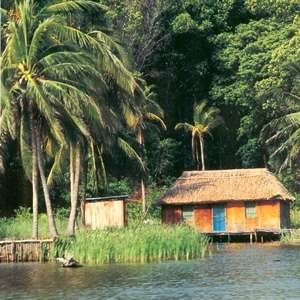
Stilt houses
#history #history The first architects specialized in this type of construction were the Aborigines called Añú or Paraujanos. That millennia have inhabited the northwest of the Venezuelan coasts, and the lake areas of that subregion. This culture is recognized as the original builders of stilts. By anthropological studies, the first fixed dwellings are located in the Mesoindian era, which covers the period between 5,000 and 1,000 BC.
This is possible to affirm, because during that period there is a change in the living conditions of those who lived on the Continent, as a result of the changes in climate and vegetation that conditioned the disappearance of large mammals, which allowed these ancient inhabitants to become collectors and fishermen, as attested by the remains found on the coasts and islands of the region.
The time to run away or hide from dinosaurs was over. However, the issue of security was always present and determined for those who were in the vicinity of lakes and coasts, the decision to build their houses or stilt houses deep into the waters.
The initial idea to build their homes is associated with the trees of the coastal forests of those places where the main settlements were made, specifically the so-called mangroves, being the Red Mangrove tree (Rhizophora mangle), with its wading roots, which served as the first foundations of these old houses, later they were erected on columns of those same trees but independently.
- Comments (3)
- Recommended
- Milestones



Here are your recommended items...
Here are your milestones...






